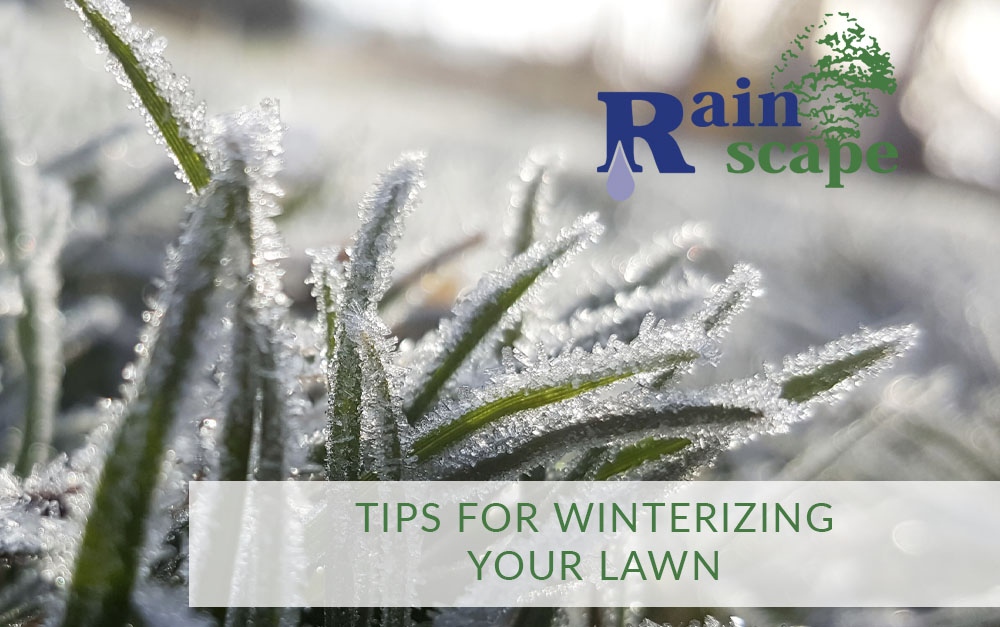As we are preparing our homes and landscapes for winter many of us think of our gardens and trees. Did you know that winterizing your lawn is important? When you take the right steps now to prepare your grass for winter it will set you up for a quick spring greening.
Winterizing doesn’t require a lot of time or money, and yields a lush, healthy spring turf. Two quick steps and you will be done:
Step 1: Know your grass – Take the time to identify your grass
- Warm-season turf such as Bermuda, centipede, zoysia and St. Augustine
- Cool-season turf such as Kentucky bluegrass, perennial ryegrass, or fescue
Step 2: Fertilize based on type – Cool-season and warm-season turf require different schedules
- Cool-season turf grows most strongly in the fall. The most important time to fertilize it is during this time period. Winterizer fertilizer is usually available in October and November.
- Warm-season grass will stay green through winter in milder winter regions, so you will want to fertilize in early autumn. Choose a fertilizer with a slow-release nitrogen source and this will help crowd out winter weeds by fueling a steady grass growth. If you are in an area that experiences late fall freezes you will not want to fertilize too late and risk fueling new growth that would be damaged by freezes causing its roots to be more susceptible to stress and damage.
Fall fertilizing is effective because plants respond to external triggers in fall to begin to prepare for winter. As the length of the days change and the temperatures start to drop and fluctuate it spurs changes in plants. Cooler air causes turf grass to slow growth and shift food reserves from the leaves to roots. The roots are still active underneath the soil in most plants, including grass.
Plants shift their excess nutrients to their roots, and this is what helps them to revitalize in spring. Your grass takes the fertilizer that you give it in the fall and use it to feed the active roots and store these nutrients for winter.
In spring the seasonal changes bring longer days and warmer air, and this kicks the grass blades awake and they start to grow. The food reserves from winter feed their growth. Fall fed grass grows thick and lush and can crowd out weeds.
It’s important to keep track of your fertilizing and take it seriously. If you can’t remember when the last time you fertilized was or if you even need to fertilize you should take the time to test your soil and it will inform you. When you apply the right amount and type of fertilizer you will have a lawn that is healthy and thick.
In the Visalia area, we don’t have snow to contend with and have warmer winters than many areas, but still need to be mindful of freezes. It’s important to keep up on watering but be cautious not to overwater and keep an eye on the sprinkler system during freezes. October and November are the best times to start winterizing your lawn to increase the odds of a healthy springtime lawn. If you have any questions, we would be happy to help!

